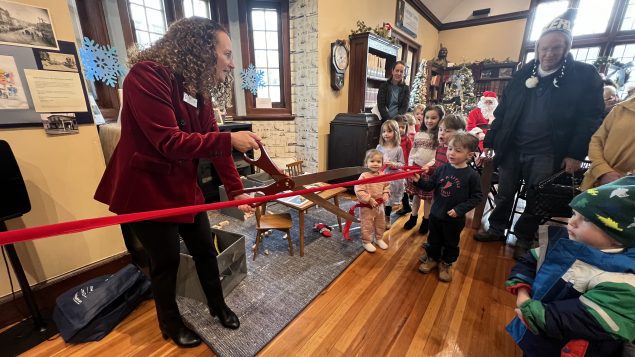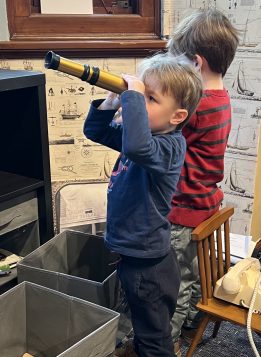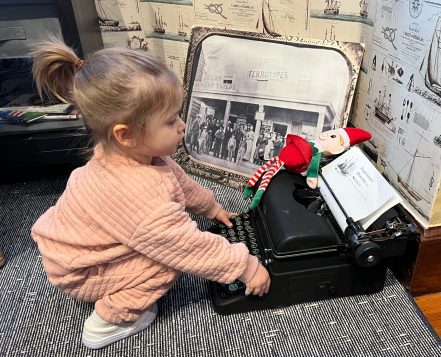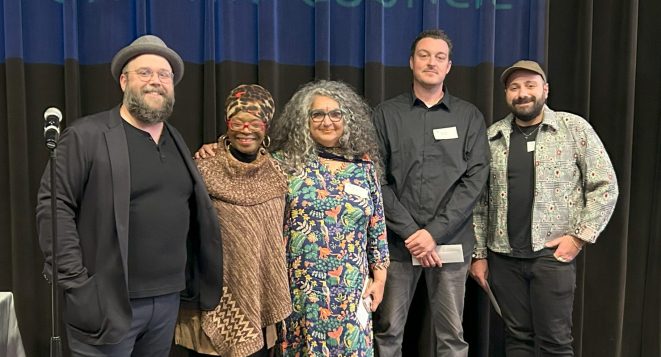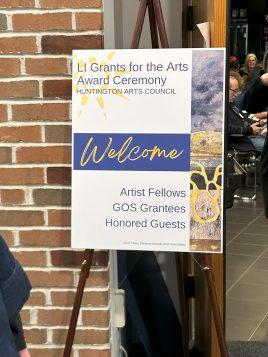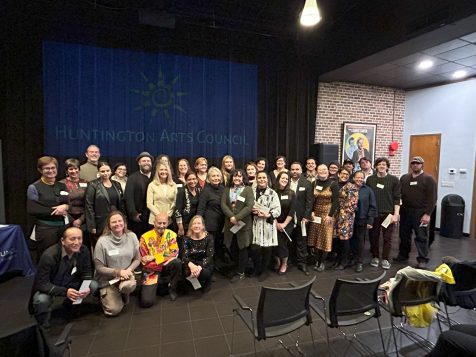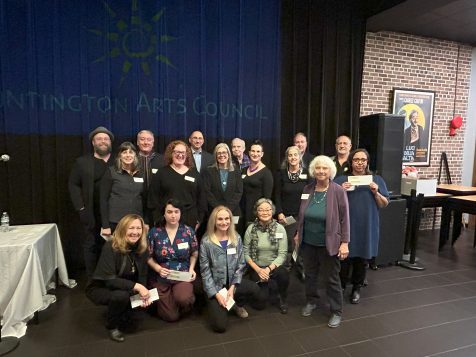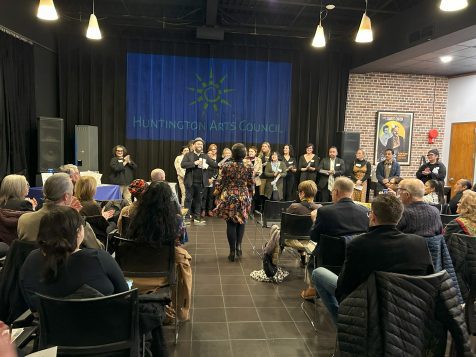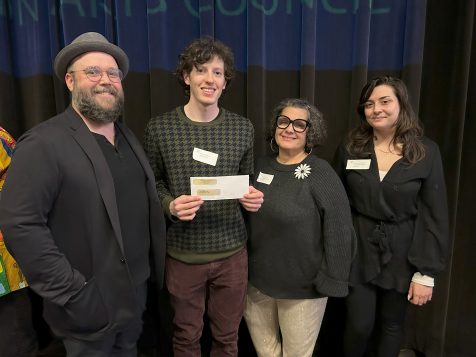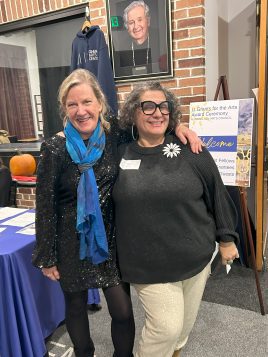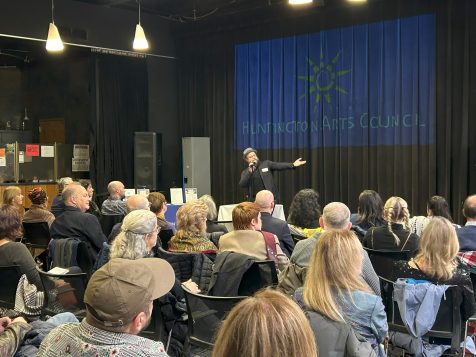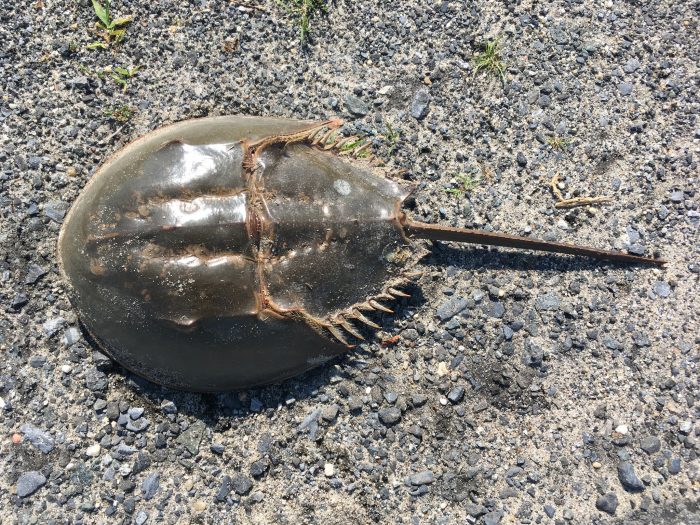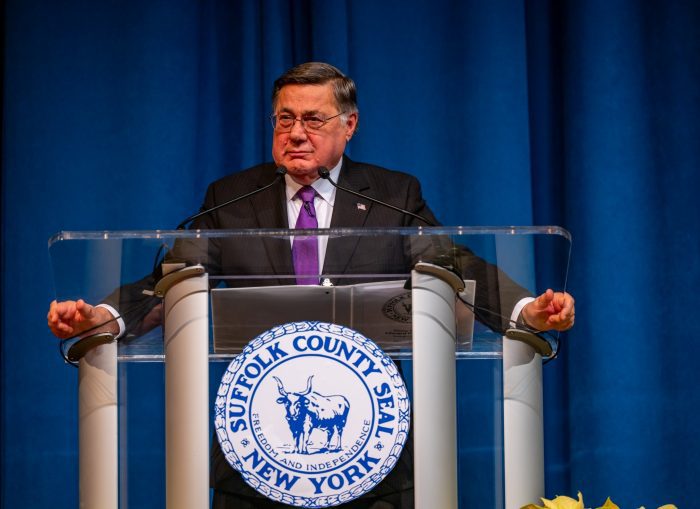By Jennifer Donatelli
The Northport Chamber of Commerce held a ribbon-cutting ceremony Dec. 15 at the Northport Historical Society to celebrate the grand opening of its new exhibit, Kids Make History Cove.
With a grant from the Suffolk County Department of Parks, Recreation and Conservation, the historical society created the year-round exhibit which is both fun and educational for young history enthusiasts. Interior designer and business member Elizabeth Olivier volunteered her time to help design the exhibit.
Using the museum’s educational collection and vintage items such as Victorian-era clothing, a rotary phone, a typewriter and a scale, curator Liz Abrams incorporated historical artifacts to teach visitors about Northport’s history.
Executive Director Terry Reid said she came up with the idea for Kids Make History Cove as a way to teach children about Northport’s history while having fun playing with old-fashioned toys.
“This is enriching for parents as well,” Reid said, “because they can enjoy the museum while the kids play in the new exhibit.”
Paula Pangen, visiting from Austin, Texas, brought her granddaughter Cecilia “CiCi” Collaro, 2, from East Northport to play in the Kids Cove.
“She loved playing with the rotary phone and typewriter,” Pangen said.
Visitors got a special treat when Santa stopped by to read “‘Twas the Night Before Christmas,” and take photos with children. Older kids also joined in the fun by participating in the Elf Scavenger Hunt which had them roaming the gallery to find hidden elves.
Claire Weissman of Northport brought her son, Miles, to see the new exhibit.
“I told Santa I want a Godzilla for Christmas,” Miles exclaimed as he looked for mini elves throughout the museum.
Reid said the scavenger hunt changes with each season and is another way to engage children while teaching them about history.
“They’re getting comfortable in a museum setting and realizing that museums are fun,” Reid explained. “Kids today are very interactive and we wanted to have low-tech toys that are engaging but also allow them to explore on their own.”
Cary Bianculli, director of marketing at the historical society, said the museum is committed to celebrating Northport’s history with its new Northport Notable feature. Each month, the museum will highlight a local historical figure who helped shape the community paired with a special activity for children.
“This month, we’re thrilled to highlight Henry Scudder, a Revolutionary War spy from Northport who played a crucial role in gathering intelligence during the American Revolution,” Reid said.
In honor of Scudder’s adventurous life, the museum is offering a Crack the Code activity where kids can engage in a hands-on game of deciphering secret codes similar to how Washington’s Culper Spy Ring operated to aid the American cause.
Founded in 1962, the Northport Historical Society and Museum is dedicated to preserving and promoting the rich history of Northport and its surrounding communities. The museum, located at 215 Main St., houses permanent and rotating exhibits, educational programs and more than 12,000 documents, photos and artifacts that bring Northport’s history to life for residents and visitors alike.
The next Northport Notable will debut in February, featuring Edna Olmsted, a trailblazer who made history as the first woman to drive a car around the globe.
For more information on the monthly Northport Notables and other events, visit www.northporthistorical.org.

